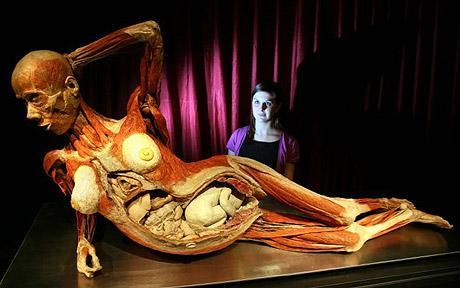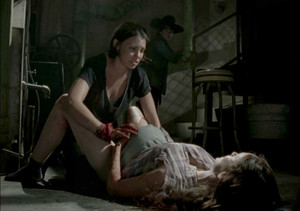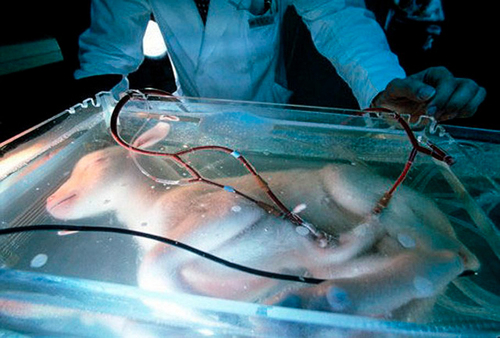Is our culture's fetish with the baby bump a modern form of fertility worship? Does pregzilla have a scientific foundation? Is it true that the presence of men in the delivery room actually increases the chance for labor complications, putting the mother at greater risk? Are we certain that women will be unnecessary as baby carriers in the future? Why in the hell is pregnancy porn so popular?
A new book addresses, explores and ruminates on all of these questions...and more. It is titled, The Infantile Grotesque: Pathology, Sexuality and a Theory of Religion, $24, 162 pages. Below are brief snippets on various topics around childbirth and culture:
Childbirth and the Baby Bump:
"Fitness magazines now exist for pregnant women, as does pregnant lingerie and entire lines of clothing catering to the babified curves of a woman's body. Traditionally requested to be kept indoors and to not draw attention, nowadays a woman should "wear" her pregnancy.
Since the "baby bump" is the newest pregnancy motif to be splayed across the cover of Vogue or Esquire (it is really modern fertility worship), it appears that pregnancy has indeed been redefined for contemporary culture - as something sexy, something essential to the woman's body yet unessential to a modern woman's identity, since the bump is, after all, merely an accessory to a woman's sexuality. One writer has even gone so far as to label the bump "invisible pornography." But can we say that birth itself has been equally reinvented? No, we can't."
Childbirth and Contradiction:
"One immediately thinks of the ever traveling Bodies: The Exhibition, which presented bodies (children, adults, teenagers, infants, pregnant women, obese men) stripped of their skin and exhibited with varying degrees of denudement - some just skeletons, some with veins and skin without skeletons, others carved like steak. This exhibition is a great example of bodies in detail, and of the voyeuristic, nay I say criminal, manner in which detail strips bodies of their humanistic properties and makes them museums unto themselves.
Yet, this exhibit presents us with a strange reality - it is socially acceptable to quietly contemplate a flayed female body, who died in a manner unknown to us, carrying a dried, sliced and overly-chemicaled 8-month-old infant still in the womb with a large intestine snaking around in an empty stomach, all the while displayed in a position reminiscent of Venus, the Greek Goddess of love, beauty and fertility. In contrast, we can't seem to stomach how a child is born from a naked woman in the flesh? Defleshed, dried and dead pregnant bodies preserved like lab frogs are more acceptable than a beautifully nude woman giving birth in real time."
Childbirth and Zombies:
"Aside from the fact that birthing bodies have a lot in common philosophically with zombies, they are also, like the zombie, a public imaginary, a body that stands-in and is infused with our deepest sensibilities. The zombie - life infected. The zombie - humanity in decay, writhing, dead while alive, thoughtless, fearless, reckless, insatiable. Insatiable for what? To spread their virus. They consume, only consume. Dead while alive? Thoughtless, automatic...In fact, the birth scene is pivotal in nearly all dystopian and zombie films, since we put it forward to represent a version of ourselves that must thrive - not just humanity per so, but the "how" of humanity, the lineage of bodies, the torch of flesh that is human reproduction."
Childbirth and Technology:
"Childbirth is grotesque because of the fact it challenges the integrity of the human body by, in essence, presenting the human as its constituent elements - it is a reverse crucible. So, if biotechnologies are trying to bring us into a "post-nature" or "post-human" epoch, where we transcend our bodies, then it should be no surprise to learn that birth today is often marked by its association with the "unnatural," which it is, since birth rivets the mother to her body, inextricably.
...In the future, the creation of bodies and minds will have to take place outside the womb (ectogenesis), for maximum market efficiency, and it should be no surprise that scientists have already begun to use womb scaffolding in raising animals - a Japanese professor did as much with a goat embryo. Even more relevant is the fact that in 2014 a Swedish woman gave birth from a transplanted womb, for the first time in history."
Childbirth and PTSD:
"Humans are the only type of mammals where the female invites their sexual partner to witness them giving birth. While voluminous studies exist on what the brain does when watching a horror movie, how our neural patterns are rewired by meditation, and/or how video games have the potential to generate plasticity, no studies exist on what the brain goes through when viewing childbirth, arguably the most intense and important event nature has to offer.
Childbirth is so unsettling that numerous statistics and studies, including one conducted by Oxford University, have been reporting that after viewing it many men (and women, but for different reasons) experience post-traumatic stress syndrome (PTSD), the same condition that soldiers experience after coming home from war, not to mention victims of violent crimes, among others. Some researchers, and again, this topic is extremely under studied, note that 5% of men will have PTSD after witnessing (and actively participating in) the birth event. For obvious reasons, the numbers for mothers are higher, around 9% or 6%, depending on the study. C-sections produce their own type of trauma as well. However, when you look at the numbers, the amount of people in the United States currently suffering from implicit or explicit PTSD due to childbirth is staggering.
Even though those who do experience PTSD symptoms are likely to recover within 3 months without psychological treatment, according to the math, the year 2012 in the U.S. (4 million babies born) produced 255,000 new individuals in the U.S. with chronic and haunting PTSD induced from watching their children being born, birthing them, or witnessing a c-section. Compound this number with all the years before it and after it, and you have tens of millions of cases, most of them unreported. It's fair to say that, at the very least, birth is stressing us out, especially since many people have "subclinical symptoms," which means that their intrusions fit no concrete pattern for trauma recognition or PTSD. It is traumatizing, in fact, which has very real consequences for divorce rates and the health of relationships."
Childbirth and Pregzilla:
"Just recently, however, the "obstetrical dilemma" has been proven incorrect. Scientists have discovered that human gestation periods have gotten longer, not shorter, an observation that challenges the former theory. Humans have relatively long pregnancies, around 37 days longer than primates of our size, and, because of the increasing medicalization of childbirth, birth today takes longer than fifty years ago. What scientists now believe determines the length of our gestation period is the mother's "metabolic ceiling," that is, she can barely produce enough energy to keep her, and the baby, intact. In other words, pregzilla has a biomechanical explanation - the mother is truly falling apart.
The Infantile Grotesque: Pathology, Sexuality and a Theory of Religion
Paperback: 162 pages
Publisher: The Davies Group, Publishers (March 18, 2016)
Language: English
ISBN-10: 1934542490
ISBN-13: 978-193454249






